For Hidden Gems Package, David E. Klutho Didn’t Know What to Expect

Full Frame is Sports Illustrated’s exclusive newsletter for subscribers. Coming to your inbox weekly, it highlights the stories and personalities behind some of SI’s photography.
To get the best of SI in your inbox every weekday, sign up here. To see even more from SI's photographers, follow @sifullframe on Instagram and visit SI.com/photos. If you missed last week’s edition on LeBron James’ first SI cover, you can find it here.

The covers of the October 2021 issue of Sports Illustrated are graced by Los Angeles Angels star Shohei Ohtani. Yes, that’s covers. With Ohtani’s pitching and hitting abilities taking over Major League Baseball this season, it makes sense that the sport’s breakout star would have two covers for one issue: one with him on the mound and the other with him finishing his majestic left-handed swing.
Ohtani is one of the most popular baseball players in the world, but if you flip through the magazine, you’ll find examples of stories focused on the opposite end of the popularity spectrum.
The Hidden Gems package features seldom-told stories of the places where sports are played in America that don’t always get the headlines. They are locations that are built and maintained out of love, grief, passion and, in one case, because it was naturally there.
“They aren’t always easy to find, these hidden gems,” the introduction to the package reads. “You have to know where to look.”
Photographer David E. Klutho didn’t know where to look. He had never heard of any of the places he was supposed to photograph when he accepted the assignment. Klutho has covered Super Bowls, Olympics, Stanley Cup finals and more. Now, he found himself driving down “nearly four miles on a dusty gravel road that will have your car looking like it just played five sets at Roland Garros,” Stanley Kay writes.
“I knew none of them,” Klutho says. “There was no real shot list for these. You just kind of had to see what’s there. You’re hoping that it isn’t fake news. … None of them were like that.”
Klutho’s assignment was to photograph these hidden gems by giving “the impression of how the event is handled in the venue,” he says. One of the ways you can do that, he adds, is by supplying different angles.
For example, while in Hamtramck, Mich., to shoot Detroit City FC, its Depression-era stadium and its fan atmosphere, Klutho knew he wanted to capture the supporters’ half-mile march through the neighborhood on their way to the stadium.
So, before they made their walk, Klutho did it—backwards. He wanted to make sure that he had certain points along the route where he could tell the story of the people in the image as well as their surroundings.

During a game, Keyworth Stadium "pulses with sound and smoke," writes Brian Straus. So, Klutho focused less on the pitch itself and more on holistic view of the venue. That was freeing in a way, he says.
“If one angle doesn’t look good, I’m not even going to shoot from that angle. But if you’re shooting to cover a game, you might have to shoot that angle because you want to get the action.”
That thinking led to a shot like the one below, where nearly the entire frame is covered with smoke from the crowd that helps illustrate what it’s like to watch or play a game there.

In Austin, where an architect has built a sandlot baseball field on a floodplain, the games are played by musicians, photographers, filmmakers and other artists.
There’s a saying about baseball that every time you go to a game you might see something new. You can say the same thing about the field, named the Long Time, because it has been built up over time, Emma Baccellieri writes.
To that end, Klutho’s images captured the piecemeal approach that has helped develop the venue.
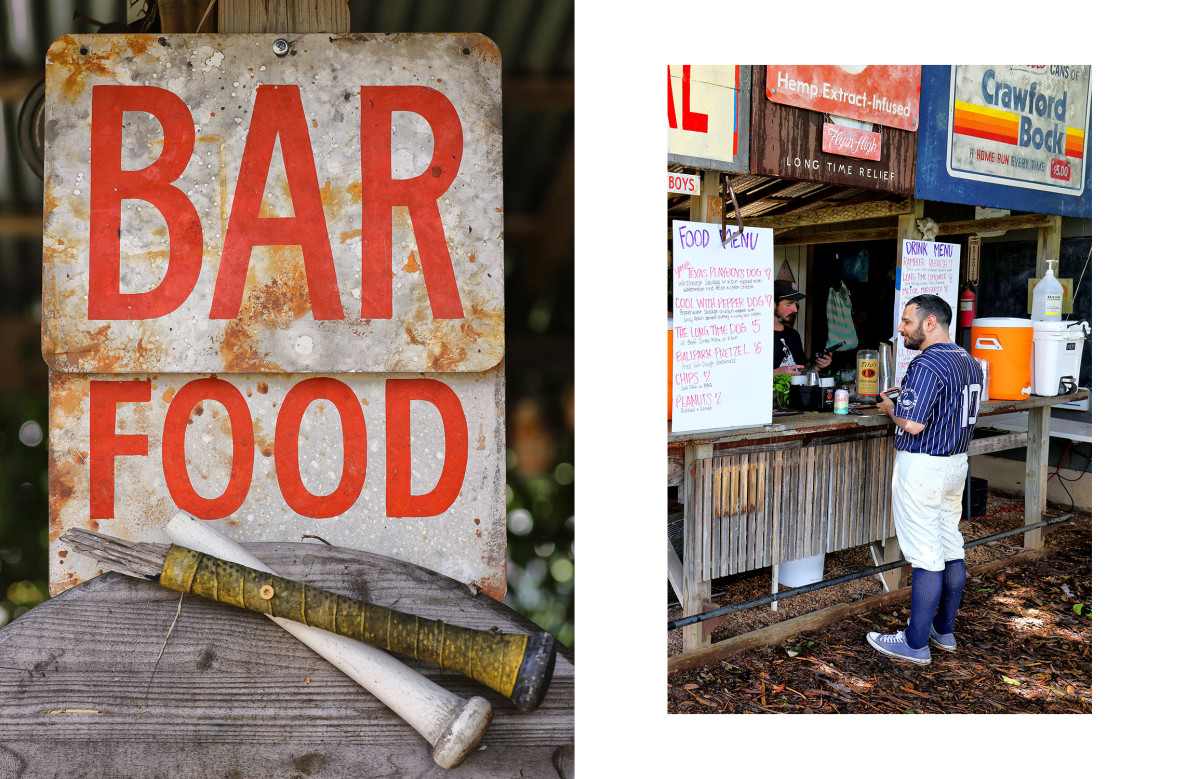
Everything at the Long Time was fastened together to create a welcoming place for baseball. But sometimes, nature provides its own hidden gems.
There’s a swim club in Louisville that, literally, sprung from the ground. At first, Klutho didn’t understand why the surface at the bottom of the pool looked so ragged. He climbed up to a high angle to capture the entire pool complex and still questioned why the club didn’t spend more money to finish the pools.
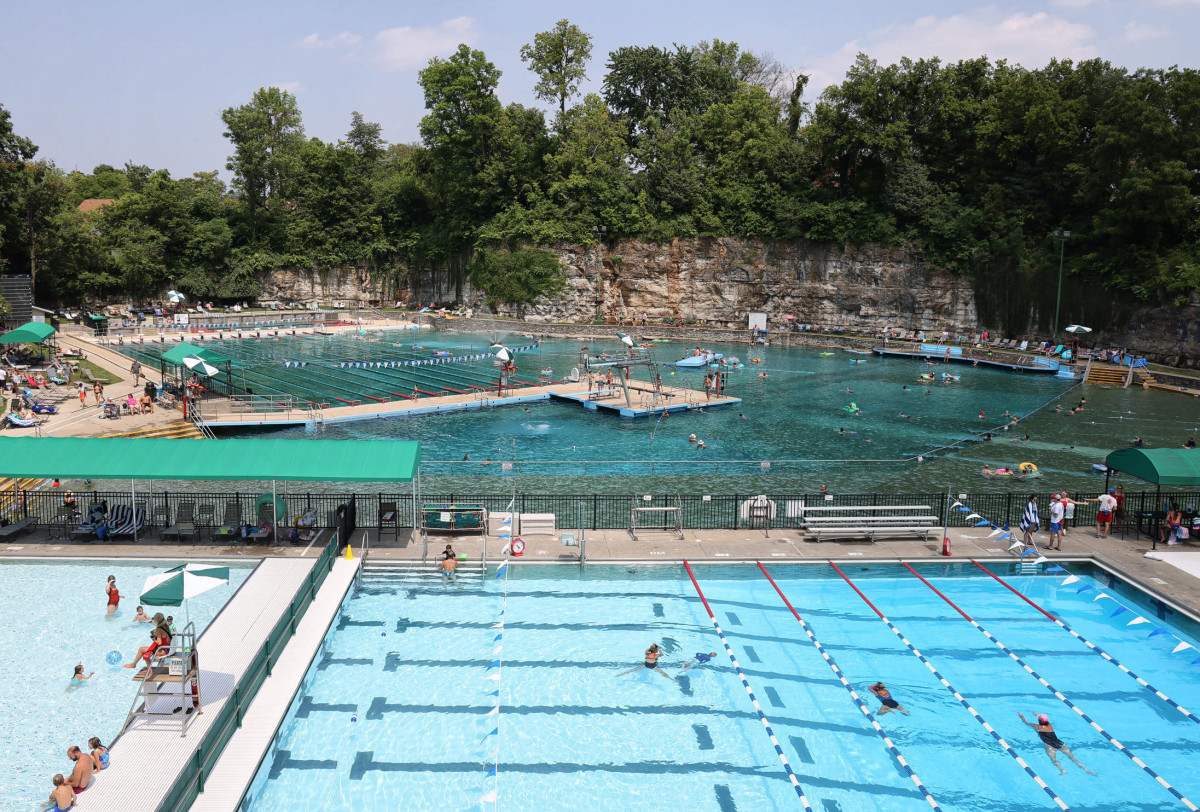
Then, when he got near the water, he realized what was going on.
Lakeside Swim Club is situated in an old limestone quarry and “the bottom was finished in concrete (although still rough-hewn in many areas),” Pat Forde writes.
“In a world where pools tend to come in standard sizes and locations, Lakeside’s converted quarry stands out,” Forde adds.
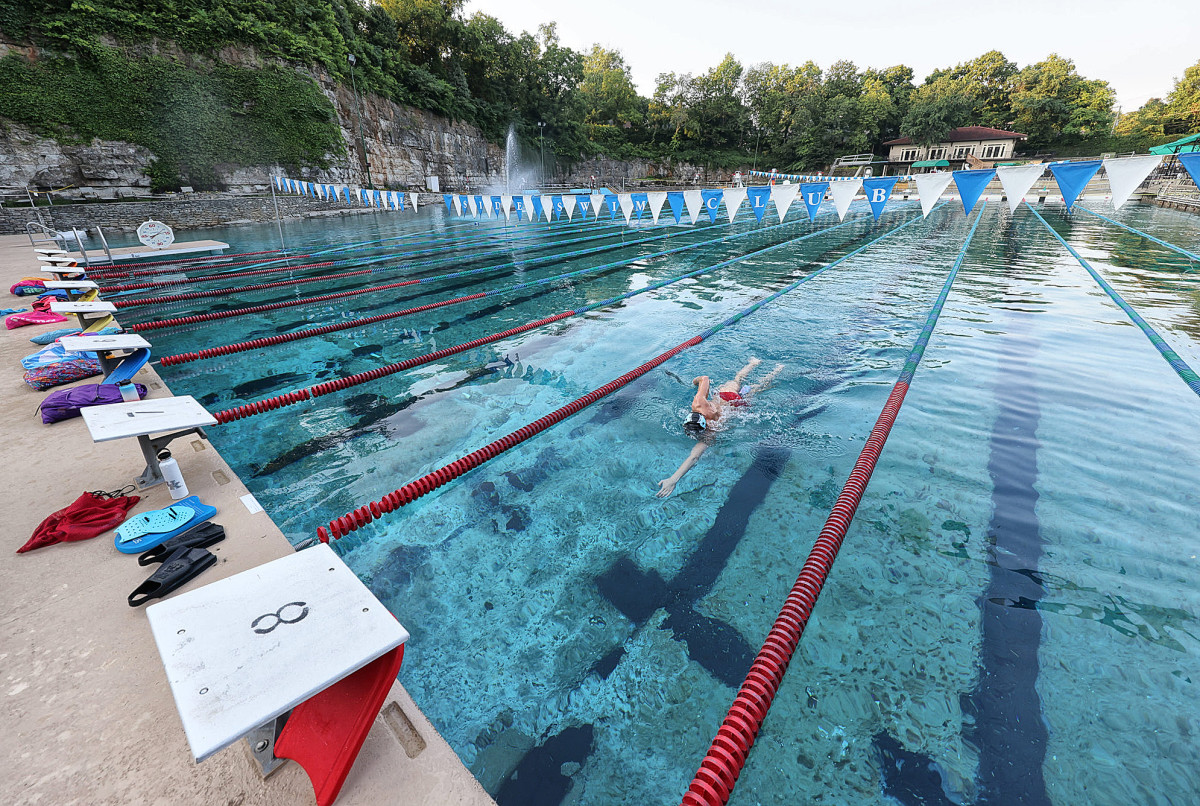
Tennis courts, too, come in standard sizes. But locations and settings can vary. And, in Iowa, there’s a patch of grass that’s hidden within hundreds of acres of corn and soybeans that contains the closest thing you can get to Wimbledon on this side of the Atlantic, writes Stanley Kay.
The 71-year-old farmer named Mark Kuhn who maintains the court even worked at Wimbledon during an internship with the grounds staff in 2012.
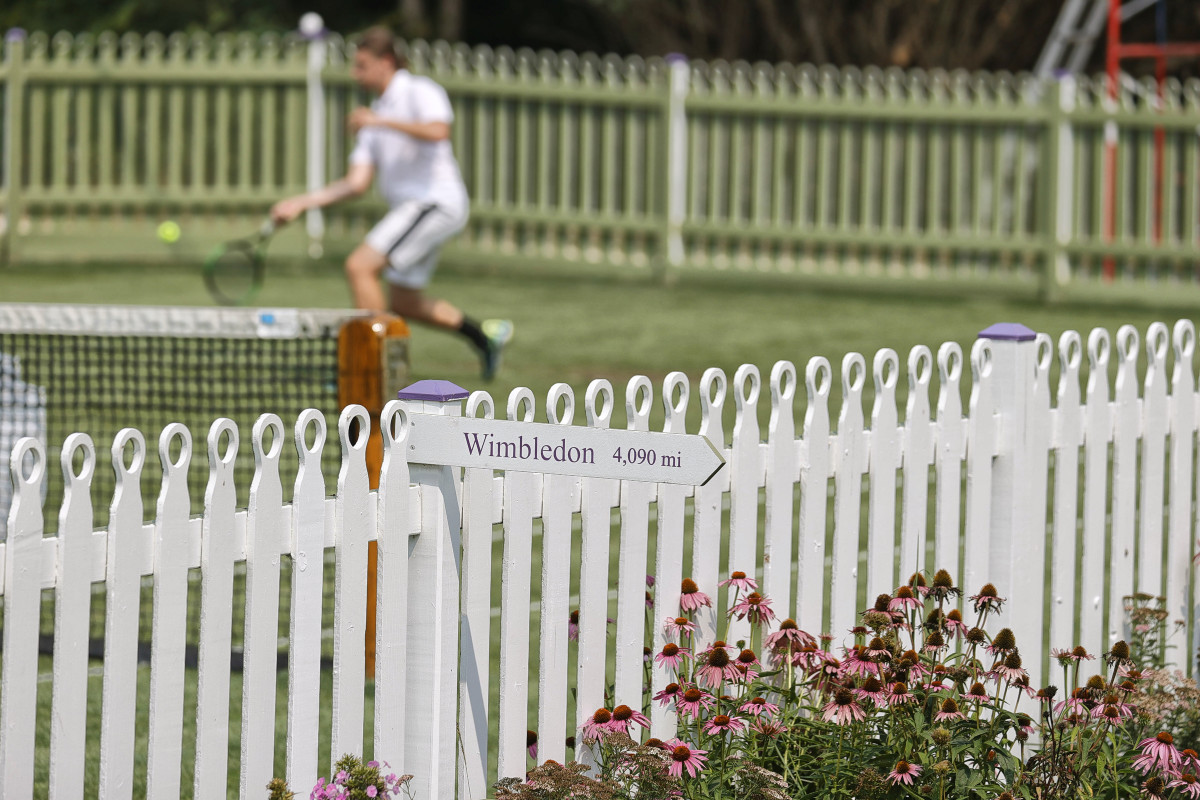
Kuhn, whose court is open to the public, uses the same ryegrass as the All England Club, draws the court’s lines with the same compound and uses the same method that Wimbledon does. Kay writes that he spends a minimum of an hour a day maintaining his single grass court.

Klutho wanted to illustrate how this tennis oasis was situated in its landscape. But, due to Iowa’s flat topography, he had to get creative to find a high angle. Kuhn had a ladder, but it was too short. Instead, Klutho opted to climb on Kuhn’s roof, lean on his chimney and wait for the perfect light to get his shot.
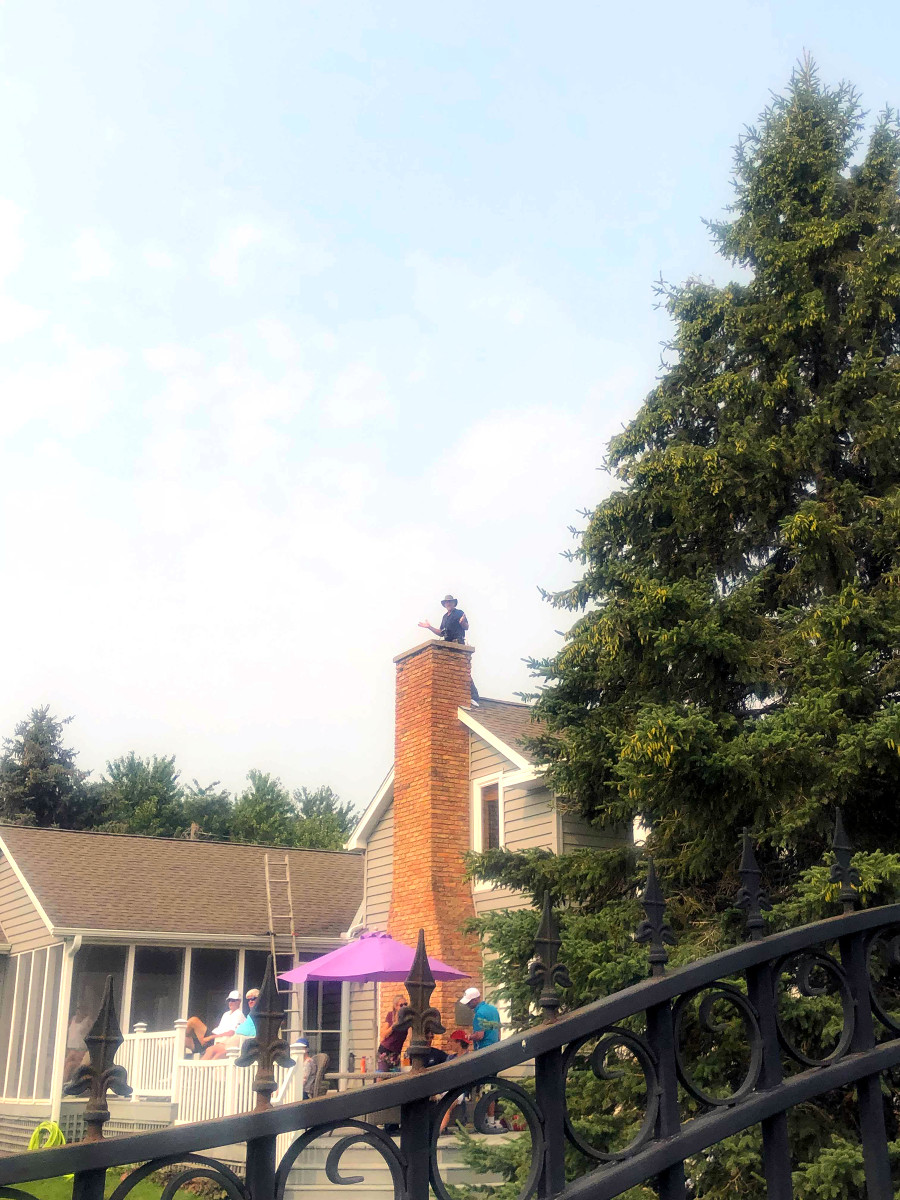
“It was sketchy,” Klutho says. “I used to do a lot of ladder work in high school and college, painting or whatever. … [It had] what I consider a steep pitch of asphalt shingles that are slidy to begin with. You’re not planning on doing any roofing so you’re not wearing sensible shoes for that purpose.”
Careful and patient, Klutho got his shot.

Throughout his time shooting for this series, Klutho used different lenses and aimed to capture the reasons these places are special to the people who go to them. For example, he would trade his typical lenses for architectural lenses for some shots.
Because these gems were, in a sense, hidden, it forced Klutho to approach everything with open eyes.
“I just needed to go in and see what I see,” he says.
For more images from the Hidden Gems series, visit this photo gallery.
